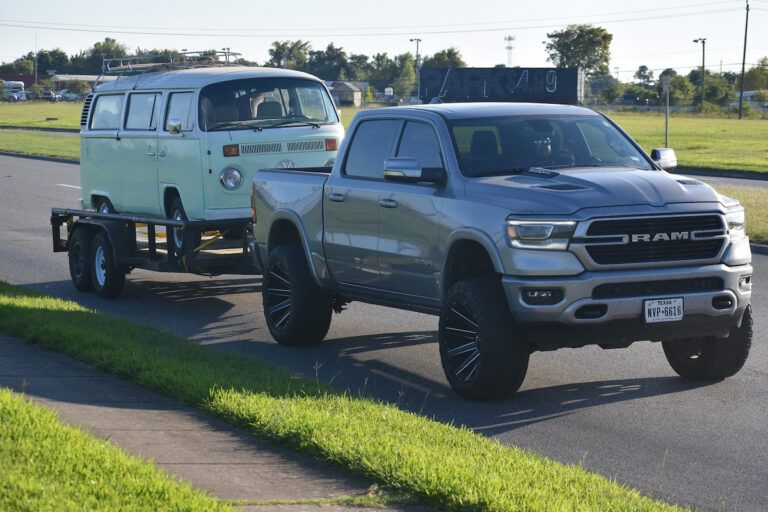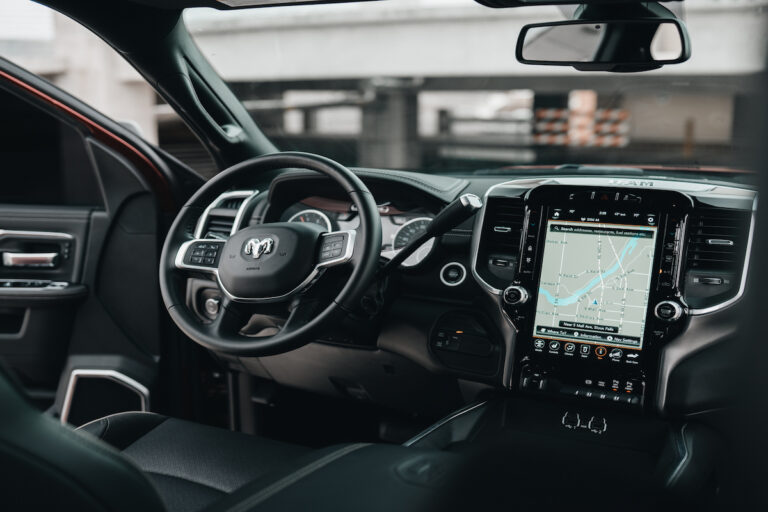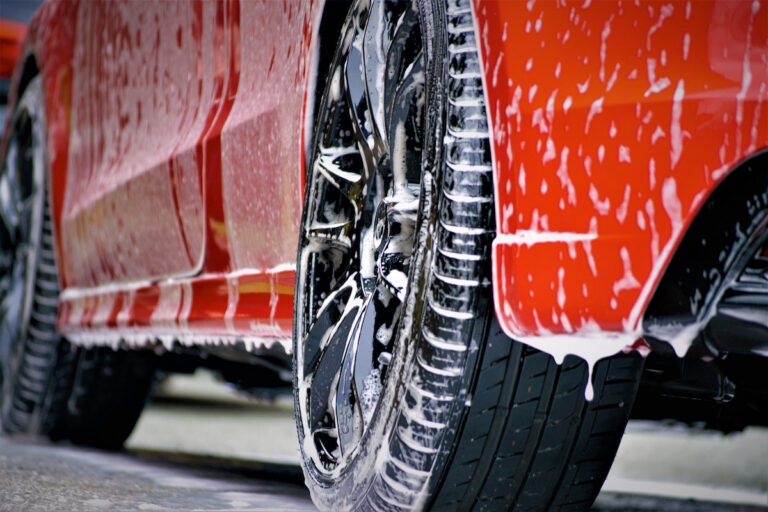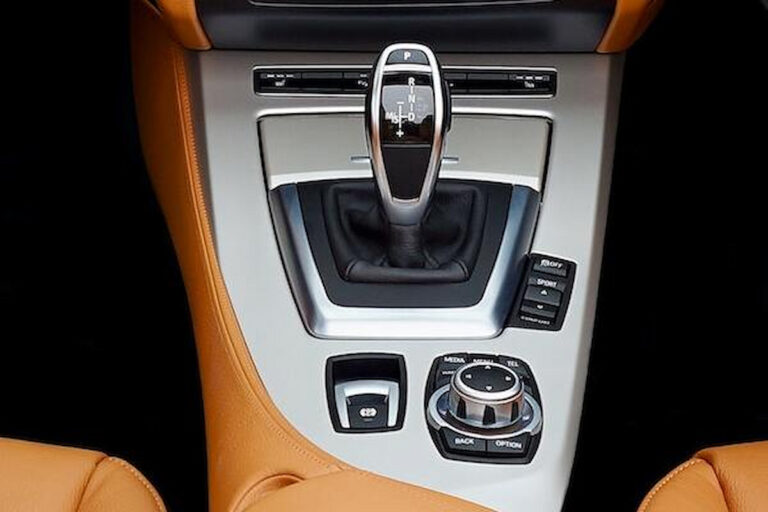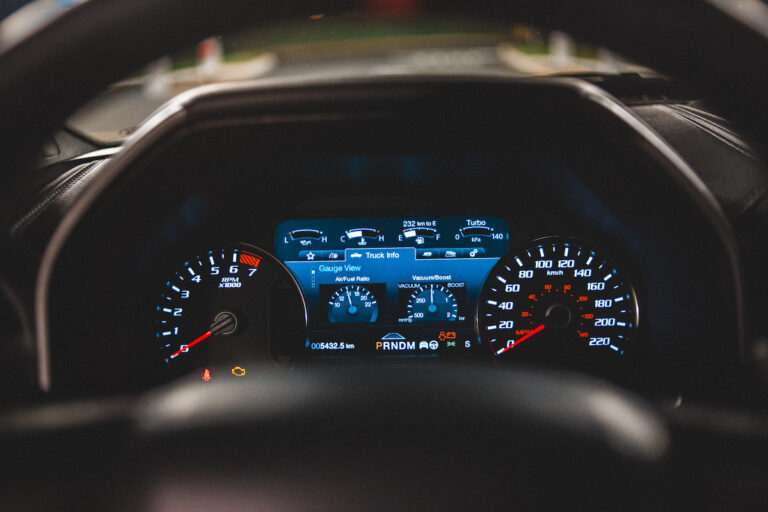How Fast Can Dodge Ram 1500 Go? (4WD Low vs. 4WD High)
If your Ram 1500 has four-wheel drive, you need to be aware of what speeds you can safely drive when you have it engaged.
Because if you drive too fast in four-wheel drive, you can damage your vehicle.
Ram does not give a limit when it comes to how fast you can go in 4WD high. However, it is generally unwise to drive more than 55 mph in 4WD high. As for 4WD low, you should not exceed 25 mph.
In this article, I will discuss how fast a Ram 1500 can safely go in 4WD high and low, as well as the difference between 4WD high and low.
Then, I will describe how to use 4WD in a Ram 1500, what will happen if you go too fast in 4WD, and whether you can safely drive in 4WD on the highway.
Lastly, I will talk about whether you can switch to 4WD while driving, what 4WD Auto is, the difference between 4WD and AWD, and whether you can reverse in 4WD.
How Fast Can a Ram 1500 Go in 4WD High?
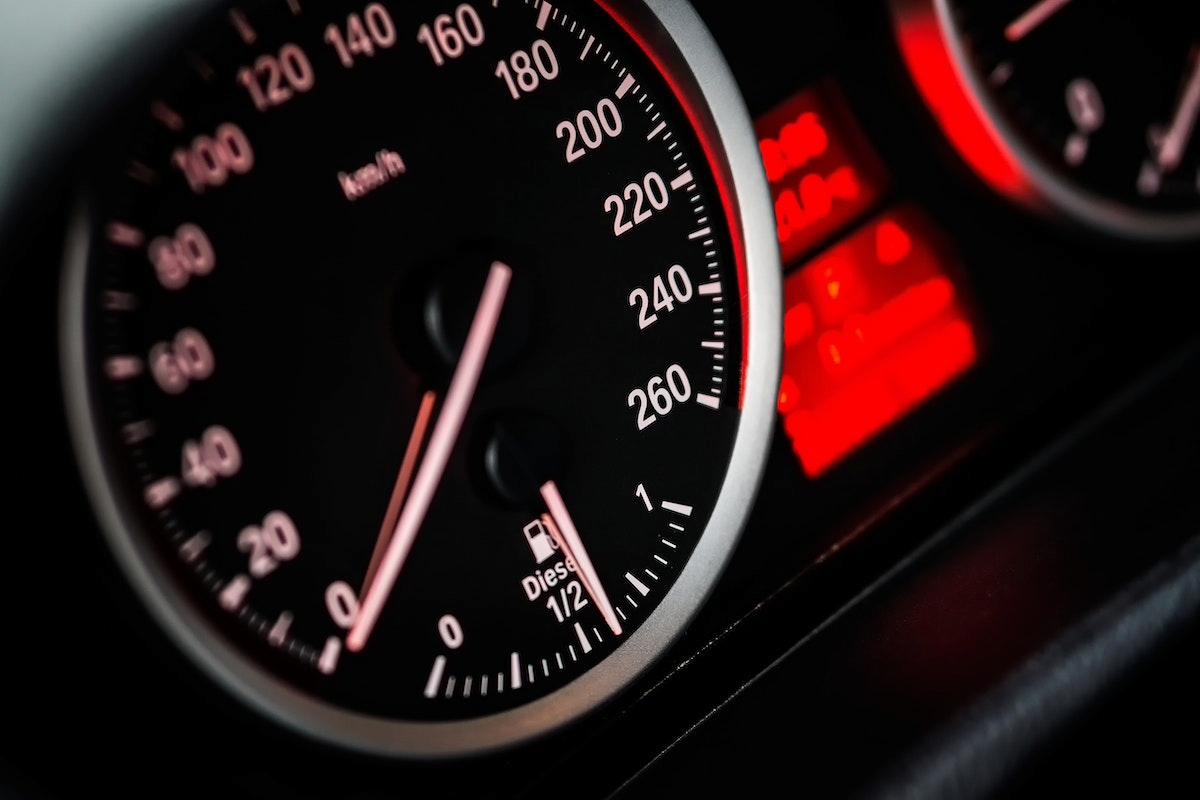
The Ram 1500’s owner’s manual does not specify a max speed at which you can drive in 4WD high.
Yet, most experts do not recommend driving faster than 55 mph (89 kph) in 4WD high in any vehicle.
How Fast Can a Ram 1500 Go in 4WD Low?
According to the Ram 1500’s owner’s manual, you should not exceed 25 mph (40 kph) when in 4WD low.
If you do, you can seriously damage your vehicle.
What Is the Difference Between 4WD High and 4WD Low?
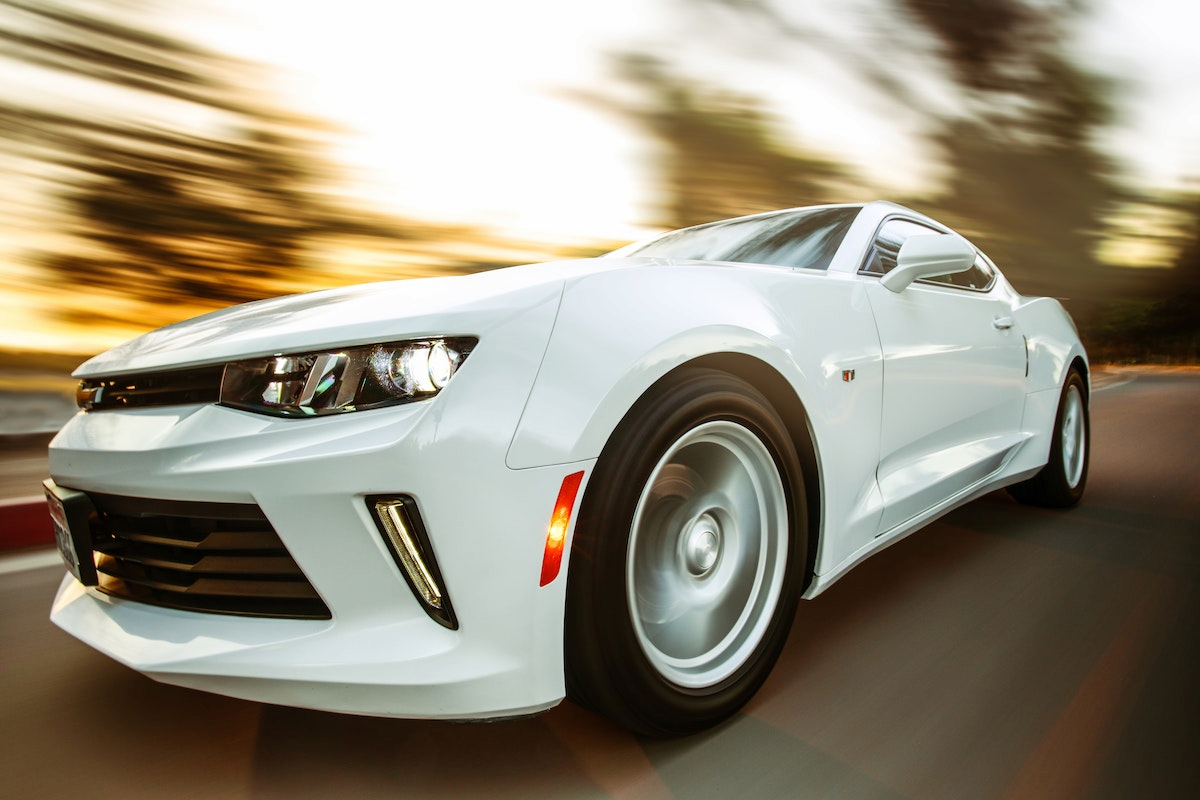
4WD high and 4WD low may seem similar, but each has different situations in which it is the preferable choice.
4WD high is best for conditions where you need just a bit of extra traction and power.
For instance, if you are on a paved road that’s gotten a bit snowy or icy, 4WD high can give you the extra tractions you need.
4WD high can also be a great option if you’re doing some mild off-roading.
In general, 4WD high is best if conditions aren’t harsh enough that you need to drive below 25 mph (40 kph), but you still need more traction and power than you would on a standard road.
4WD low, on the other hand, offers you the most power and traction.
You should pick 4WD low if you are driving through thick snow or deep mud, over sand or rocks, or on steep inclines or declines.
As a rule of thumb, if 4WD high won’t cut it, you need to use 4WD low.
How to Use 4WD in a Ram 1500?
Using 4WD, high or low, is quite simple in a Ram 1500.
To do so, you first need to shift your truck into neutral.
Then, look near your steering wheel to find the buttons for 4WD high and 4WD low.
Select which 4WD option you need, and then shift back into drive.
If you want to go back to two-wheel drive, just shift into neutral, choose 2WD, and then shift back into drive.
What Will Happen if I Go Too Fast in 4WD?

If you go too fast in 4WD, you could severely damage your car.
Namely, driving at high speed in 4WD low will cause significant problems.
Some of the issues that may occur if you drive too fast in 4WD include:
- Excessive tire wear
- Damage to the axle gears
- Excessive wear to the transfer case
- Damage to bearings and ball joints
Thus, as you can see, you can quickly rack up expensive repairs if you drive too fast in 4WD.
Additionally, you should remember that turning at high speeds in 4WD can be dangerous because the tires may slip.
Can I Safely Drive in 4WD on the Highway?
Yes, you can safely drive in 4WD on the highway as long as you follow some simple rules.
For one, unless the conditions are very, very poor, such as very thick snow, you should always use 4WD high instead of 4WD low on the highway to maintain a safe speed.
Also, of course, remember that it isn’t a good idea to go above 55 mph (89 kph) when using 4WD high.
Thus, if you need to turn on 4WD on the highway, stay in the right-hand lane because driving slowly in the fast lane can cause an accident.
Finally, keep in mind that it isn’t great for your truck to run in 4WD when you don’t need it.
So, if the highway conditions are not adverse, you should stay in 2WD.
Otherwise, you risk wearing out your driveline components, which can be expensive to fix.
Plus, driving in 4WD uses more gas, meaning you’ll need to spend more at the pump if you stay in 4WD.
Can I Switch to 4WD While Driving?

Yes, you can switch to 4WD when driving.
If you want to switch to 4WD high, you should first slow down to 55 mph (89 kph) or slower before shifting.
For shifting into 4WD low, you should drop your speed to between 2 mph (3 kph) and 3 mph (5 kph).
What Is 4WD Auto in the Ram 1500?
4WD Auto is a type of 4WD best for driving in mixed road conditions.
For example, if it has just rained and there are puddles on the road, 4WD Auto can help you navigate these differences in traction.
4WD Auto is also ideal for small amounts of snow since it can adjust the traction as needed.
And the best part about 4WD Auto is that you can drive as you normally would, as there’s no need to keep things slow.
However, 4WD Auto will not give you the same power and traction as 4WD high or low.
Additionally, keep in mind that using 4WD Auto will negatively affect your fuel economy.
Thus, it’s probably best not to drive in 4WD Auto all the time.
What Is the Difference Between 4WD and AWD?
Since 4WD stands for “four-wheel drive” and AWD stands for “all-wheel drive,” it’s easy to assume they are the same thing.
However, although they’re similar, there are some important differences.
In 4WD, the engine powers all four wheels evenly, making it great for hauling heavy loads and keeping balance on rugged terrain.
AWD, on the other hand, powers all four wheels independently so that each wheel can gain traction on its own.
Overall, AWD does a suitable job of driving in many types of weather conditions and off-road scenarios.
Yet, if you are serious about off-roading, often drive in severe weather conditions, or frequently pull heavy loads, 4WD is the better choice.
Is it OK to Use 4WD in Reverse?
Driving in reverse in 4WD is the same as driving forward.
Thus, you just need to ensure you stay below the speed limits for 4WD when reversing, which are 55 mph (89 kph) in 4WD high and 25 mph (40 kph) in 4WD low.
As long as you follow these rules, you shouldn’t have any problems reversing in 4WD.
Conclusion
Although there is no maximum speed limit when using 4WD high in a Ram 1500, it is best not to exceed 55 mph (89 kph).
As for 4WD low, you should never go over 25 mph (40 kph).
Table of Contents
- How Fast Can a Ram 1500 Go in 4WD High?
- How Fast Can a Ram 1500 Go in 4WD Low?
- What Is the Difference Between 4WD High and 4WD Low?
- How to Use 4WD in a Ram 1500?
- What Will Happen if I Go Too Fast in 4WD?
- Can I Safely Drive in 4WD on the Highway?
- Can I Switch to 4WD While Driving?
- What Is 4WD Auto in the Ram 1500?
- What Is the Difference Between 4WD and AWD?
- Is it OK to Use 4WD in Reverse?
- Conclusion


